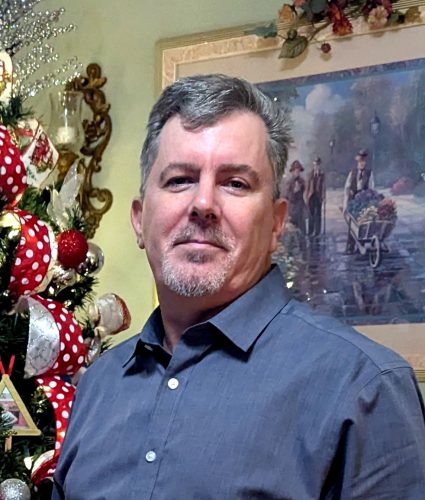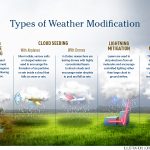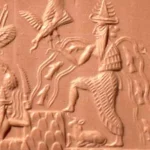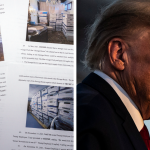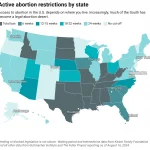~ PUREGNS ~
AI Search Results
~~ Weather modification is the intentional manipulation of the weather, which can be done in a number of ways:
- Cloud seeding: A common method of weather modification that involves releasing particles into clouds to increase precipitation. The particles, often silver iodide, increase the chances of water droplets condensing. Cloud seeding is used to increase water supplies, reduce hail damage, and eliminate fog.
- Altering solar energy: Materials can be introduced to absorb or reflect sunlight.
- Adding heat: Heat can be added to the atmosphere from the surface.
- Altering air motion: Air motion can be altered artificially.
- Influencing humidity: Evaporation can be increased or decreased to influence humidity.
- Changing cloud formation: Chemicals can be used or additional water can be inserted into clouds to change the processes by which clouds form.
- Suppressing fog: Fog can be suppressed by warming the foggy air to increase the amount of water it can hold.
Weather modification has been used for centuries, from ancient rituals to modern cloud seeding. It is used in many countries around the world, including in the Western U.S. states of California, Nevada, Colorado, New Mexico, Wyoming, Kansas, Oklahoma, Texas, North Dakota, Utah, and Idaho.
~~ Weather modification refers to the intentional enhancement or suppression of the current weather conditions over a given area by human agency. Inadvertent weather modification, which refers to the accidental alteration of weather via pollution or other human activities, is not addressed.
Weather Modification Project Reports
Submission Information & Frequently Asked Questions
What is “weather modification”?
Any activity performed with the intention of producing artificial changes in the composition, behavior, or dynamics of the atmosphere. See 15 Code of Federal Regulations § 908) for what is considered weather modification.
What role does NOAA play in weather modification?
Companies that intend to engage in weather modification activities within the United States are required by the Weather Modification Act of 1976 (15 Code of Federal Regulations § 908) to provide a report to the Administrator of NOAA at least 10 days prior to undertaking the activity. Those reports are filed with the Weather Program Office and may be found on the NOAA Central Library website.
Does NOAA conduct weather modification or weather modification experiments?
NOAA does not research or conduct weather modification experiments and has no plans to do so in the future.
Why does NOAA collect information about weather modification?
The Weather Modification Reporting Act of 1972, 15 U.S.C. § 330 et seq. requires that all persons who conduct weather modification activities within the United States or its territories report such activities to the U.S. Secretary of Commerce at least 10 days prior to and after undertaking the activities. Failure to report can result in fines of up to $10,000.
All weather modification projects must be reported via the appropriate email address (weather.modification@noaa.gov) prior to being implemented. They are compiled and then posted on the NOAA Weather Modification Website.
Activities subject to reporting.
(a)Weather modification activities are defined as “Any activity performed with the intention of producing artificial changes in the composition, behavior, or dynamics of the atmosphere” (see 15 CFR § 908.1). The following, when conducted as weather modification activities, shall be reported (see 15 CFR § 908.3):
- Seeding or dispersing of any substance into clouds or fog, to alter drop size distribution, produce ice crystals or coagulation of droplets, alter the development of hail or lightning, or influence in any way the natural development cycle of clouds or their environment;
- Using fires or heat sources to influence convective circulation or to evaporate fog;
- Modifying the solar radiation exchange of the earth or clouds, through the release of gases, dusts, liquids, or aerosols into the atmosphere;
- Modifying the characteristics of land or water surfaces by dusting or treating with powders, liquid sprays, dyes, or other materials;
- Releasing electrically charged or radioactive particles, or ions, into the atmosphere;
- Applying shock waves, sonic energy sources, or other explosive or acoustic sources to the atmosphere;
- Using aircraft propeller downwash, jet wash, or other sources of artificial wind generation;
- Using lasers or other sources of electromagnetic radiation; or
- Other activities undertaken with the intent to modify the weather or climate, including solar radiation management activities and experiments
(b) The requirement to report does not apply to activities of a purely local nature that can reasonably be expected not to modify the weather outside of the area of operation. This exception is presently limited to the use of lightning deflection or static discharge devices in aircraft, boats, or buildings, and to the use of small heat sources, fans, fogging devices, aircraft downwash, or sprays to prevent the occurrence of frost in tracts or fields planted with crops susceptible to frost or freeze damage. Also, the requirement to report does not apply to religious activities or other ceremonies, rites and rituals intended to modify the weather.
(c) All activities noted in paragraph (a) must be reported at least 10 days before the commencement of such project or activity. However, after the Administrator has received initial notification of a planned activity, he may waive some of the subsequent reporting requirements. This decision to waive certain reporting requirements will be based on the general acceptability, from a technical or scientific viewpoint, of the apparatus and techniques to be used.
(d) Other reporting exceptions may be made in the future by rule of the Administrator.
How do I file a weather modification report?
The following two forms are required for those conducting weather modification:
- 17-4 – Initial Report on Weather Modification Activities (Approved Information collection 0684-0025)
- 17-4A – Interim Activity Reports and Final Report (Approved Information collection 0648-0025)
When creating your reports, please use the following coding system as your NOAA file name: year, state, first four digits of the project name, and the respective report number. For instance, for a project that takes place in 2021 in Maryland and is titled Rock Canyon, the code would be 2021MDROCK-1 (initial report) and 2021MDROCK-2 (final report). You may also use this naming convention to save your files prior to submitting.
How do I submit the form(s)?
Please submit reports via email to weather.modification@noaa.gov.
How long before my submission will be published?
Submissions will usually be available in the repository within two (2) months after the end of the fiscal quarter.
What if I see streaks in the sky and I think someone is modifying the weather?
These are contrails, produced by planes.
Contrails are the condensed products of combustion and vapor generated by airplanes traveling at higher altitudes where the atmosphere is colder. They have been prominent atmospheric features since the beginning of jet plane travel in the early part of the twentieth century. Official observations of contrails were made just after World War I as planes began to fly at high altitudes.
NOAA does not have federal responsibility for regulating airplane exhaust, and we do not manage the National Air Space. The Environmental Protection Agency establishes aircraft emissions standards for any air pollution that could endanger public health and welfare, pursuant to the Clean Air Act.
The Federal Aviation Administration administers and enforces emissions standards FAA factsheet (pdf)
What is cloud seeding?
Cloud seeding requires the release of chemicals in the atmosphere in an effort to have water condense or freeze on them and become heavy enough to produce rain. Cloud seeding is considered a weather modification activity.
NOAA does not regulate cloud seeding activities but does collect information on such activities performed in the U.S. through the requirements for reporting in the Weather Modification and Reporting Act.
Contact Information
Please see our full MAINTAINING RECORDS AND SUBMITTING REPORTS ON WEATHER MODIFICATION ACTIVITIES for more information or you can contact the NOAA Weather Modification Team at weather.modification@noaa.gov.
Publication History & Scop
In the late 1940’s and 1950’s many deemed “the deliberate or the inadvertent alteration of atmospheric conditions by human activity”, also known as weather modification, as a promising science of the future. Currently, the most common form of weather modification is cloud seeding, which increases rain or snow, usually for the purpose of increasing the local water supply.
As required by that law, NOAA submitted a Report to Congress in 1979, available via the NOAA Library.
Weather Modification Frequently Asked Questions (texas.gov)
Weather Modification
“Weather modification and control” means changing, controlling, or attempting to change or control the natural development of atmospheric cloud forms or precipitation forms that occur in the troposphere by artificial methods.
Frequently Asked Questions
- How does cloud seeding work?
- Where is cloud seeding being done in Texas?
- How successful is cloud seeding?
- What role does the State of Texas assume in weather modification?
- What impact does cloud seeding have on hail?
- Is there a large amount of silver iodide, or other material, in the rainfall that reaches the ground from seeded clouds?
- What about the “downwind effects” of seeding?
- What does one do to get a cloud-seeding program underway?
What is Cloud Seeding?
A few of Our Most Popular Questions
Weather Modification can be both planned, as is the case in cloud seeding, or inadvertent, for example, when pollution affects visibility. Planned (deliberate) weather modification is also commonly know as cloud seeding, cloud modification, or atmospheric water management.
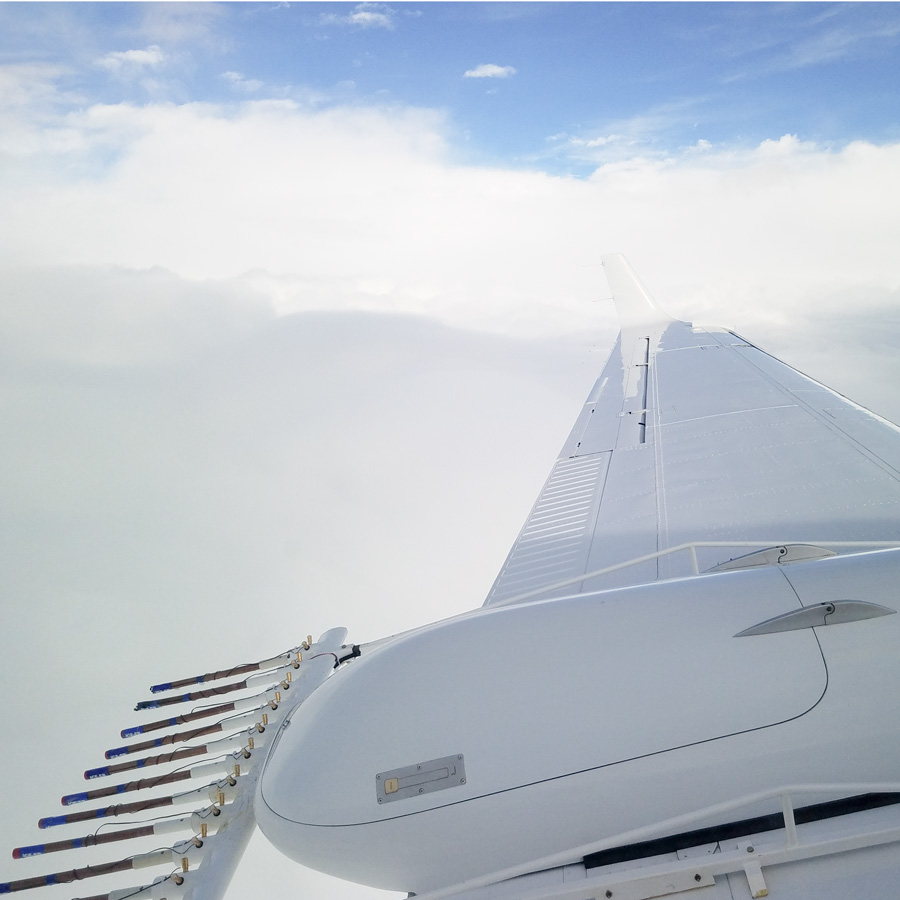
How Does It Work?
Cloud seeding, or commonly referred to as weather modification, is the treatment of individual clouds or cloud systems in an attempt to achieve a desired beneficial effect, including fog and hail mitigation, and additional precipitation in the form of either rain or snow. Cloud seeding is conducted from the ground or via aircraft by pyrotechnic flares and/or liquid fuel generators. Please visit the FAQ page for more information on seeding concepts and materials.
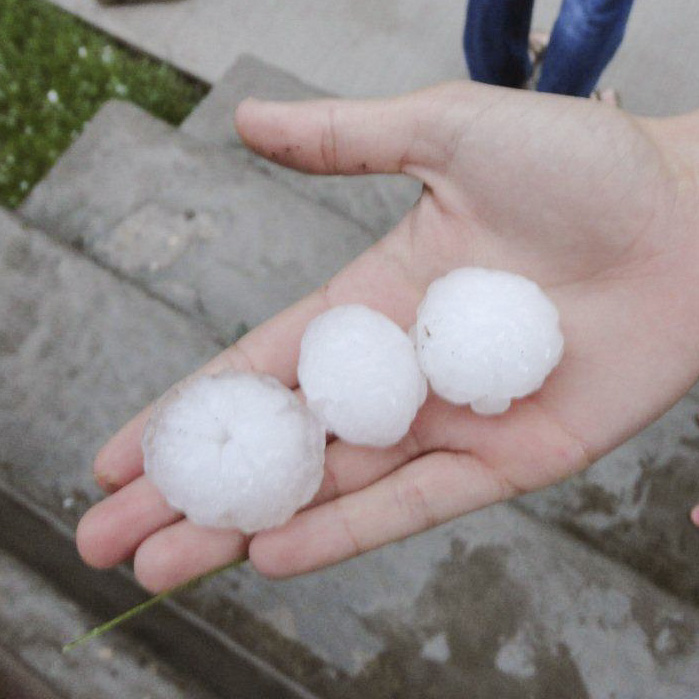
Is It Effective?
Yes, it can be very successful. Seeding agent and methodologies used in present day operations have been developed and refined over 60 years. Studies have shown certain clouds or stages of cloud development are susceptible to seeding while others are not. Various analysis show that cloud seeding technologies can increase area-wide seasonal precipitation by 5-15% and suppress damaging hail by 25-75% when effectively applied to suitable clouds. Advances in radar data processing and evaluation techniques are helping to provide additional insight into the effectiveness of cloud seeding.
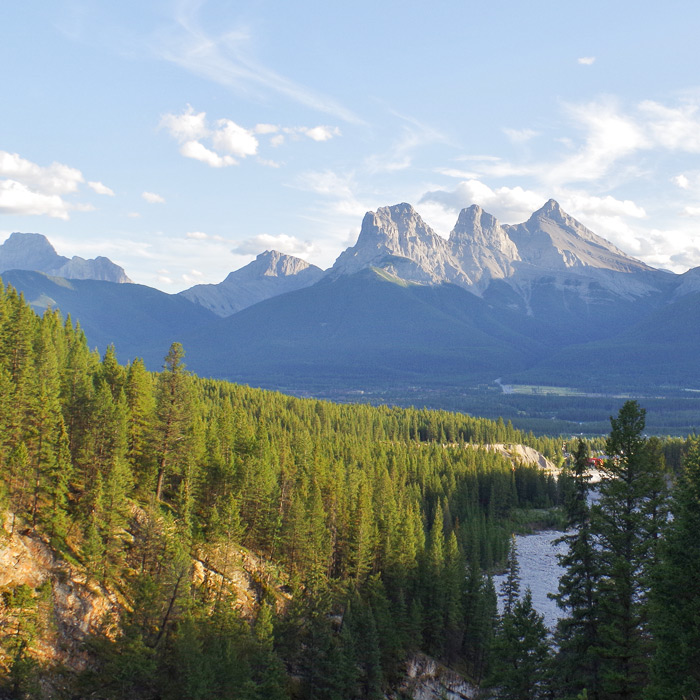
Is it Environmentally Safe?
Published scientific literature clearly shows no environmentally harmful effects arising from cloud seeding with silver iodide (AgI) aerosols have been observed, nor would they be expected to occur. Based on this work, the WMA finds silver iodide is environmentally safe as it is currently being used in the conduct of cloud seeding programs. Click the link below to see the complete WMA Environmental Impact Statement on this topic and for a bibliography of accredited sources.
Download Environmental Statement
USDA Scientists Testing New Cloud Seeding Technology | The Scoop (thedailyscoop.com)
USDA Scientists Testing New Cloud Seeding Technology
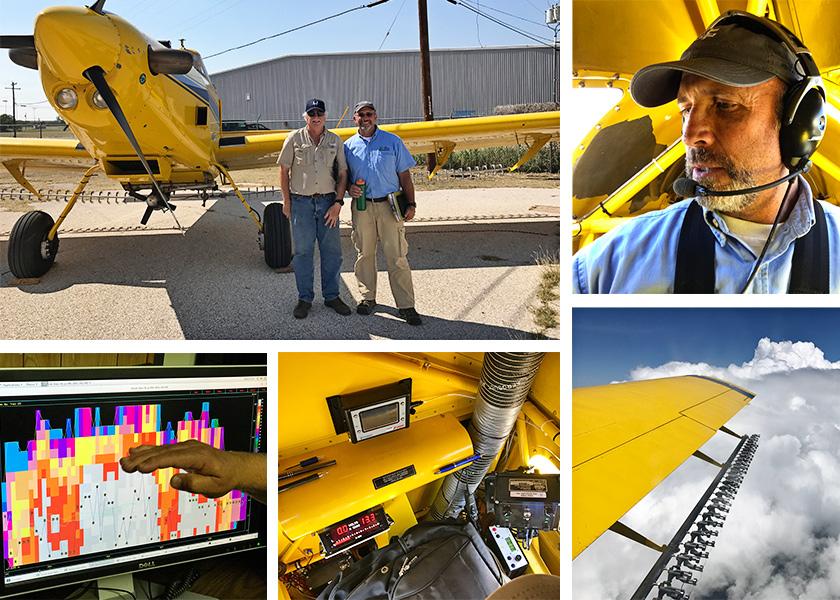
By Clinton Griffiths August 8, 2022
The dull drone of the engine buzzes the sky as a yellow air tractor sets its sights just below a cumulonimbus cloud puffing its cauliflower-shaped lungs toward the heavens. Mounted just off the wing’s trailing edges are rows of nozzles — pistols ready to fire a positively charged mist of water into the sky. As the airplane feels the tug of the cloud’s updraft, the seeds of another Texas rain are sent charging through its core.
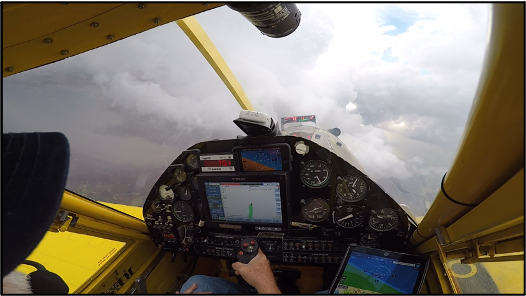
“If you introduce the right kind of particles into this supercooled area of the cloud, they can cause water droplets to freeze and additional ice crystals to form from excess water vapor in the cloud,” explains Andrew Detwiler, the president of the Weather Modification Association and a longtime university professor in North Dakota and South Dakota. “When you have a mixture of ice particles and cloud droplets, the liquid drops evaporate, and the ice particles grow becoming big enough to precipitate out.”
Science Not Fiction
That is called cloud seeding and at least 11 states are already seeding or studying the possibility of seeding clouds in the western United States. The goal is to increase rainfall, add to reservoir storage or pile inches of snowpack into the mountains for spring runoff and recharge. For many cities and agricultural operations, especially out West, that stored water is vital to sustaining long-term viability.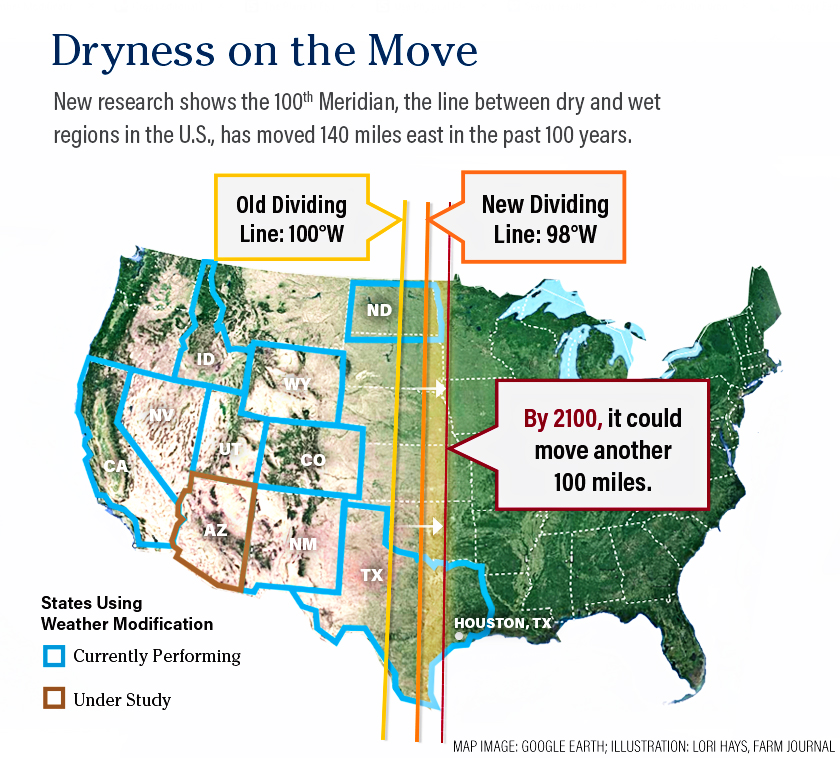
The reality of weather modification has long been whisps of foggy science promising on-demand solutions while delivering statistical maybes or anecdotal actualities. First developed after World War II, cloud seeding has been attempted off and on for decades.
“Like many fields, weather modification took off with big hopes that you could have dramatic effects on precipitation,” Detwiler says. “The effect is known now to be much smaller than originally hoped.”
New Technology Takes Flight
While traditionally done with wing or rocket-mounted silver iodide flares, new technology is finding its way into the industry. In Dubai, scientists are trying lasers mounted to drones to coax excited water particles together ending with their fall from the sky. In west Texas, calcium chloride flares that work in lower relative humidity are getting a try.
“These particles are very hygroscopic and when you release them into a cloud, they attract moisture very quickly,” says Jonathan Jennings, meteorologist for the West Texas Weather Modification Association.
He’s also been working with Dr. Dan Martin, a research engineer with USDA’s Agricultural Research Service. Martin just patented a new technology using water.
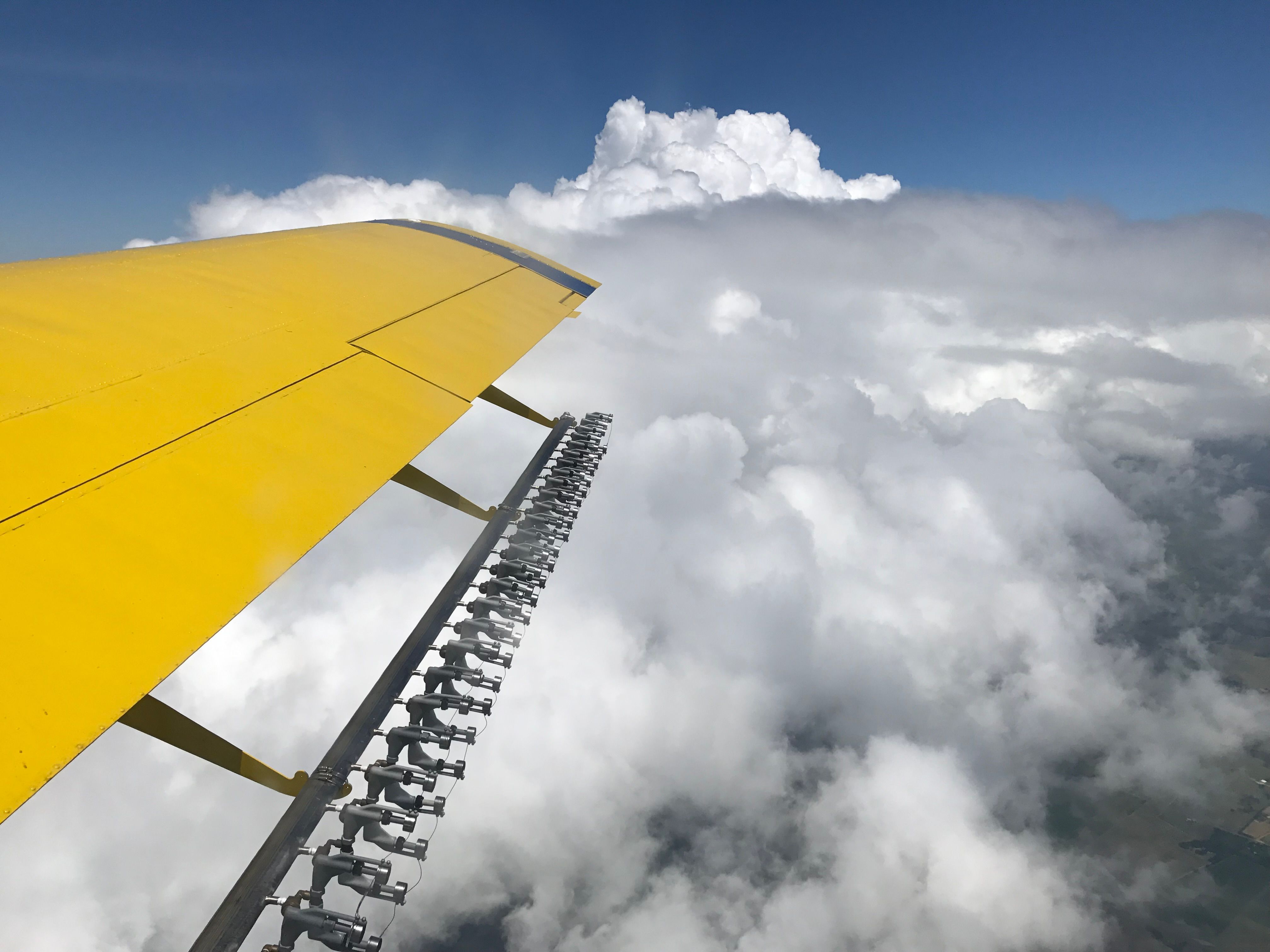 “We’re using tap water, but we’re charging it as it exits the nozzle,” Martin says. “So, our expense on that set of materials is very little.”
“We’re using tap water, but we’re charging it as it exits the nozzle,” Martin says. “So, our expense on that set of materials is very little.”
Newly patented, the technology borrows from work a previous ARS scientist was developing to improve aerial targeting of pests. Through wind tunnel and controlled atmospheric testing, Martin found the charged water droplets also form ice crystals in clouds similar to traditional silver iodide particles.
“We did our initial testing in 2017 with 13 clouds,” he says . “Those clouds were analyzed and the results showed we get a two to three times increase in some of the very major meteorological parameters.”
Jennings and Detwiler say seeded clouds average between 5% to 15% more precipitation flux (how hard and how much it rains) compared to their non-seeded counterparts. In early trials, Martin’s positively charged water is beating that number.
“We’re seeing about 25% to 30%,” he says. “That is from the initial data set, and we hope to at least confirm that this year.”
Once proven, that number could be significant and beyond the natural variability found in rain clouds.
“I feel like weather modification is on the brink of a mountain and we’re so close to getting pushed to the top,” says Jennings.
At What Cost
Long-running droughts and new technology has communities in the U.S. and abroad giving cloud seeding another look. In 2008, it was widely reported that Olympic officials in Beijing used seeding to ensure clear skies ahead of the opening ceremonies.
“We have long-term statistical evidence from Idaho Power that cloud seeding has put more snow in the mountains,” says Eric Snodgrass, meteorologist with Nutrien.
How well it’s been able to mitigate drought, Snodgrass says, is still a question.
The challenge is in dry years, with fewer clouds, you have fewer clouds to seed. This is why Jennings sees weather modification as a long-term water management strategy. A tool to help bank and replenish supplies during wet years so it’s available during years with less rain.
It’s also less expensive than other freshwater systems, such as desalination, reclamation and aquifer pumping. Jennings says their studies show 1 acre-foot of water seeded by traditional silver iodide flares costs less than $10 compared to desalination at $2,000 or more.
“Where the technology works best is where the clouds are least efficient,” Martin says. “If we can take an area that gets maybe 5” of rain a year and turn that into 10” a year, then you change the game. You can produce crops, where crops have not been able to be produced before.”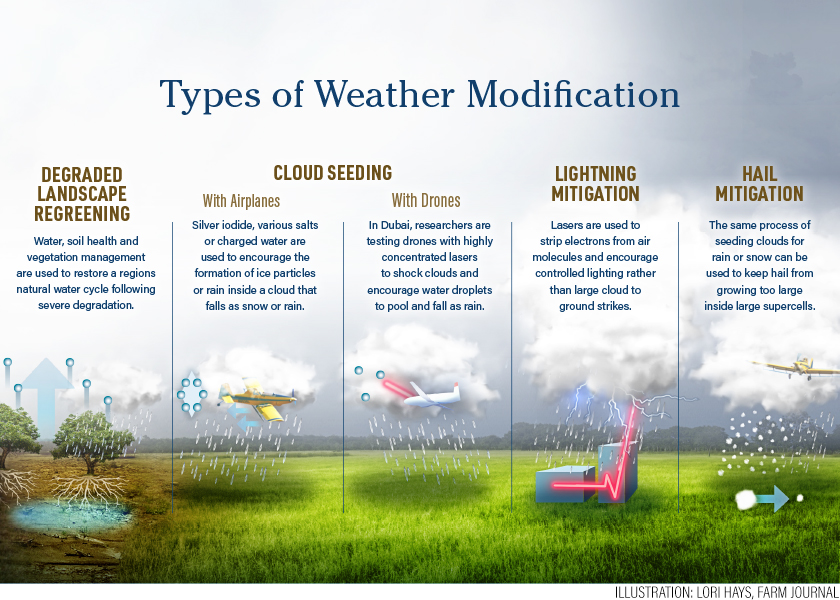
Question the Science
Since its inception in the 1940s, altering rainfall patterns via cloud seeding has been controversial. From questions about flooding to robbing moisture from other regions the ethics of messing with Mother Nature are much debated.
“One of the biggest questions we get is are you robbing Peter to pay Paul or making it rain here so it won’t rain downstream?” Jennings says. “What we’re doing allows clouds to grow larger and lasts longer anywhere from a 15-min. extended lifetime in small clouds to upwards to 45 min. in larger clouds.”
“There’s a budget to the moisture and if it’s taken anywhere along the path, then what you’re left with is your local recycled moisture,” Snodgrass says. “If you pull it from somewhere, it’s not somewhere else.”
Jennings says they aren’t taking rain from one place to give to another, they’re simply enticing the clouds to rain more when they do.
With more than 20 years of practice, he’s also adamant they aren’t making it hail. In fact, Martin’s new charged water project is in the process of being tested for hail suppression in North Dakota.
“Every year there’s $10 billion in property damage due to hail and $1 billion of that directly affects agriculture with the destruction of crops,” he says. “Our system converts the cloud moisture into rain and with less water available you get pea-sized hail rather than golf ball-sized hail.”
Charge the Future
Martin’s charged water device was selected in 2021 as a top three finalist of USDA’s ARSX2021 competition. The competition pits ARS teams against each other in a battle for transformative ideas in food and agriculture. The challenge awards three teams $100,000 to continue their research.
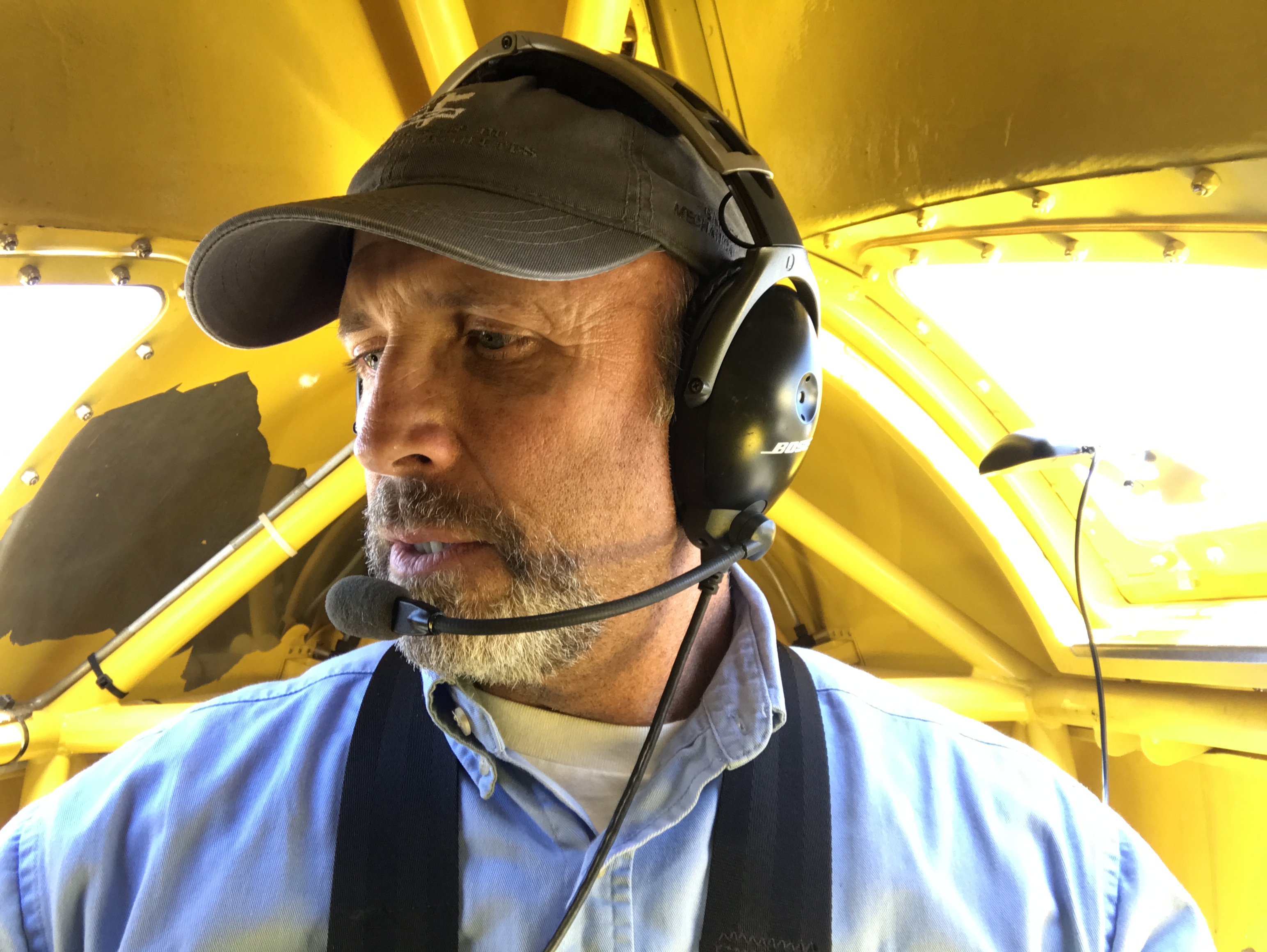
He’s optimistic about the future of the technology, although, he admits buying and outfitting these types of planes won’t be cheap. Those costs will one day be weighed against the cost of securing water in other ways.
“If you can provide more rainfall on arable land for crops, then hopefully, we can increase yield from that limited area we have available,” Martin says.





